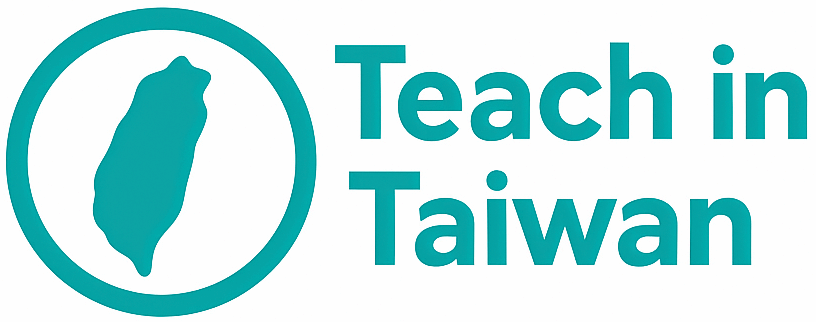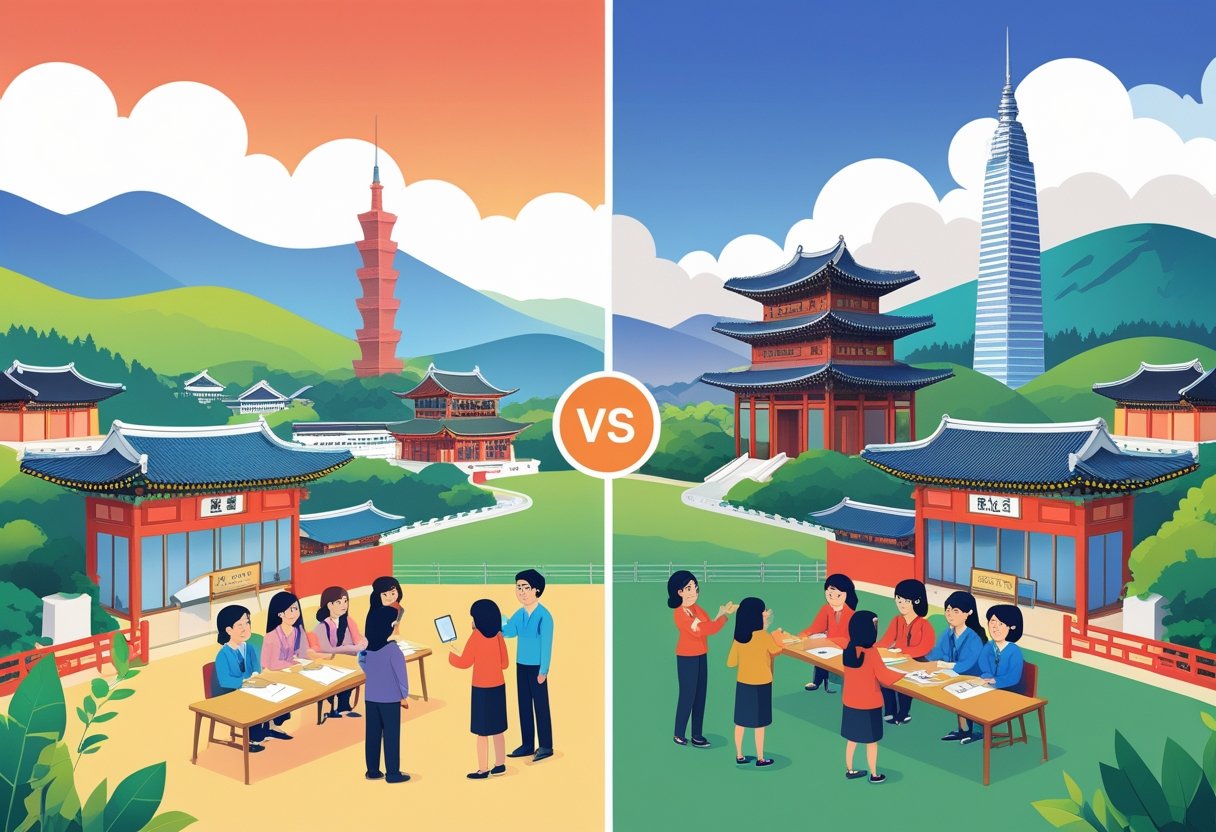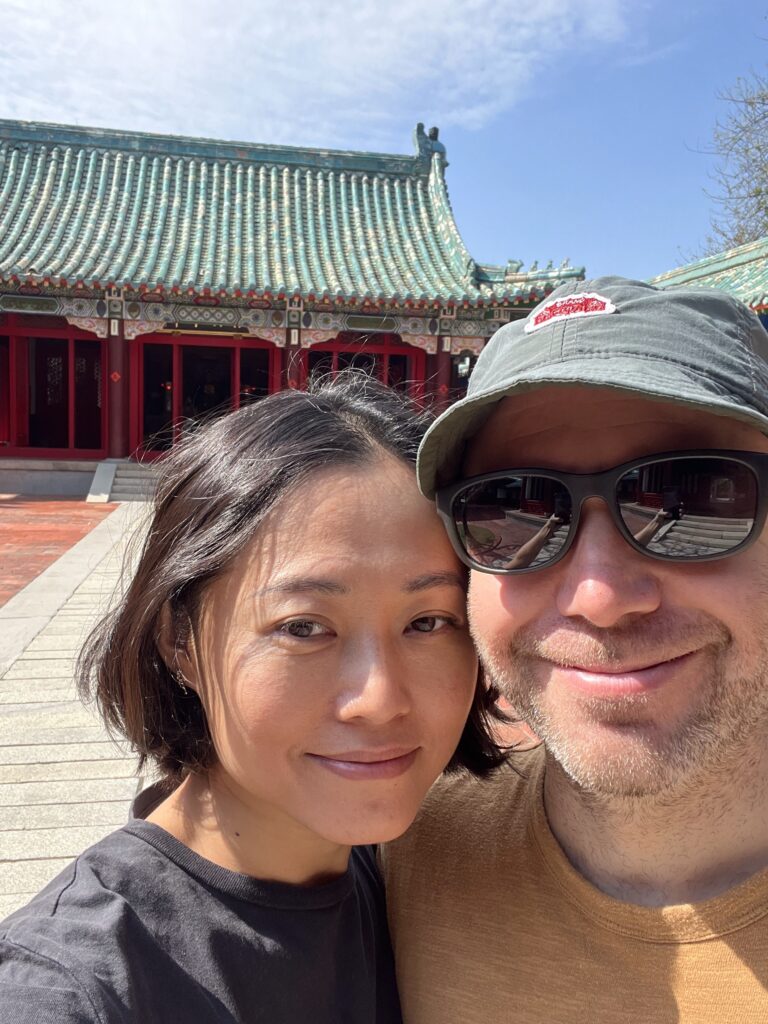Two of Asia’s most popular English teaching destinations offer distinctly different experiences for educators seeking adventure abroad. South Korea attracts teachers with its structured programs, generous benefits packages, and modern urban lifestyle, while Taiwan appeals to those seeking flexibility, relaxed work culture, and lower living costs.
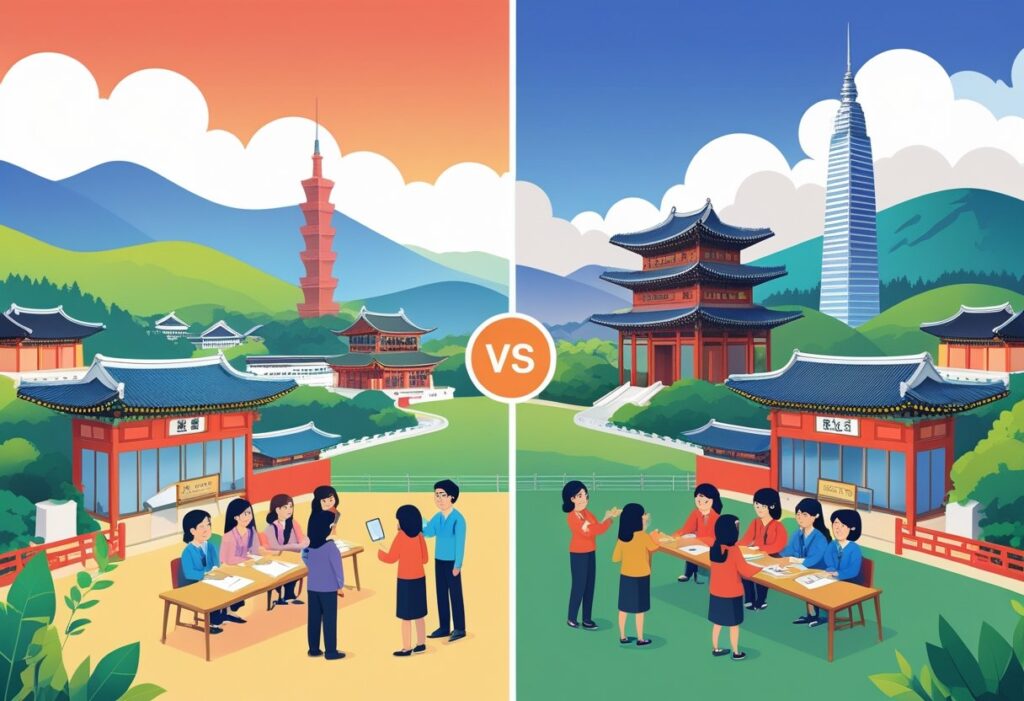
For most new teachers, South Korea provides better financial security and savings potential, while teaching in Taiwan offers greater work-life balance and cultural immersion opportunities. The choice ultimately depends on whether someone prioritizes earning and saving money or values flexibility and a more laid-back teaching environment.
Both countries welcome English teachers with bachelor’s degrees, but the similarities end there. From visa requirements and salary structures to daily work schedules and social expectations, these destinations cater to different teaching styles and lifestyle preferences that can significantly impact long-term satisfaction.
Key Differences Between Teaching English in Taiwan and South Korea
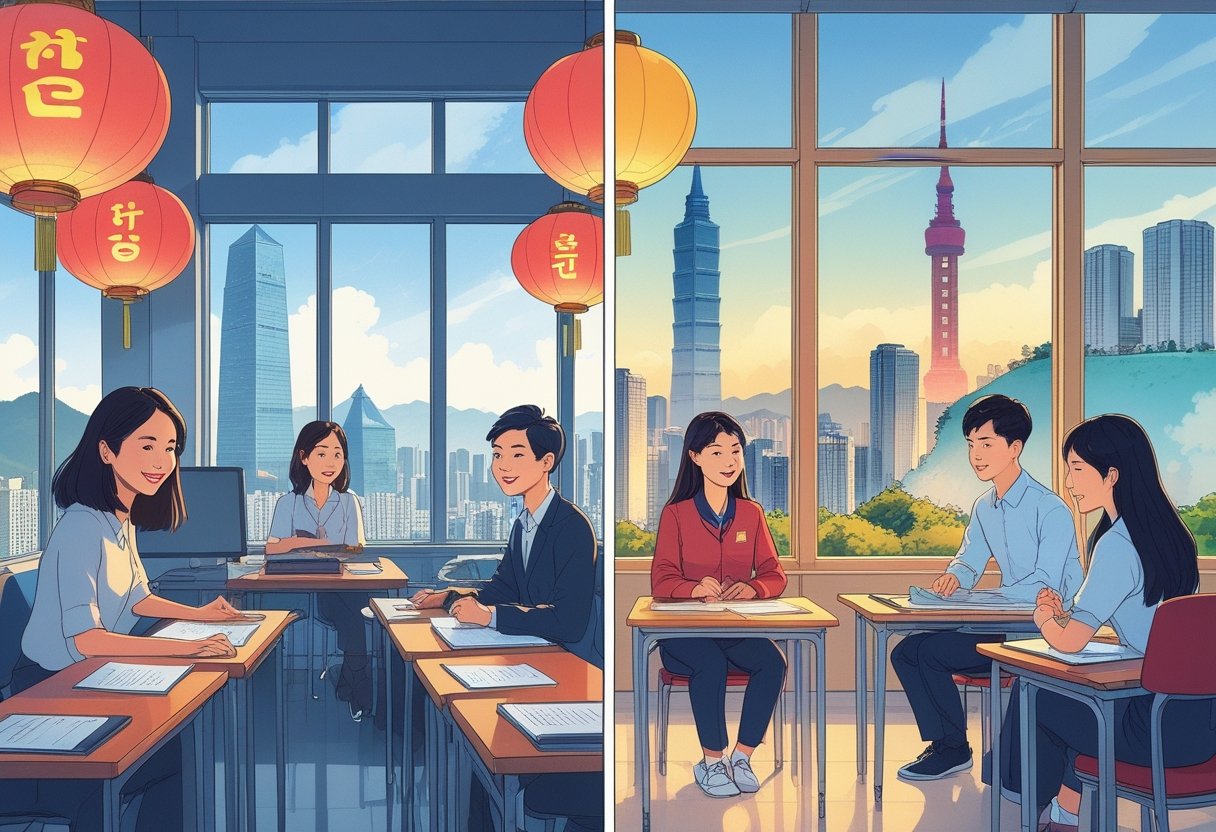
Taiwan and South Korea offer distinct experiences for English teachers, with South Korea providing more structured programs but demanding longer hours, while Taiwan offers greater flexibility and a more relaxed teaching environment.
Job Market and Demand
South Korea maintains steady demand for English teachers through established government programs. The EPIK (English Program in Korea) and SMOE programs place teachers in public schools nationwide. However, hiring has decreased over the past five years as these programs recruit fewer teachers annually.
Private academies called hagwons create additional opportunities. These schools typically hire teachers for evening and weekend classes with contracts requiring 40-hour work weeks.
Taiwan has aggressive expansion plans for English education. The government aims to become a bilingual English-Mandarin nation by 2030, creating strong demand for qualified teachers despite declining birth rates.
Most opportunities exist in private language schools called buxibans. Teachers typically work 20-25 hours per week on hourly contracts rather than full-time positions. Public school positions require certified teachers with formal teaching experience from their home countries.
Taiwan offers more flexibility in work arrangements. Many teachers prefer the part-time structure that provides better work-life balance compared to South Korea’s full-time commitments.
Popular Teaching Programs
South Korea operates two main government programs for public schools. EPIK covers most provinces outside Seoul, while SMOE specifically serves Seoul metropolitan schools. Both require bachelor’s degrees and 120-hour TEFL certifications with classroom components.
These programs provide housing allowances, flight reimbursements, and structured support systems. Teachers work Monday through Friday with standard Korean work culture expectations including longer hours and weekend obligations.
Taiwan focuses primarily on private sector opportunities rather than centralized programs. Buxiban positions dominate the market with schools hiring teachers directly through agencies like Reach To Teach.
Public school programs exist but require teaching licenses from home countries plus two years of post-graduate work experience. These positions often place teachers outside major cities like Taipei and Kaohsiung.
The private sector offers more immediate placement opportunities. Teachers can start with tourist visas and transition to work permits after securing positions with qualified schools.
Cultural Environment
South Korea maintains intense academic pressure throughout the education system. Students attend regular school then supplementary hagwon classes in the evenings, creating highly competitive environments focused on standardized test performance.
Teachers experience more rigid classroom structures and curriculum requirements. Saturday classes remain common in many schools, reflecting South Korea’s demanding work culture that extends beyond education.
The hierarchical nature of Korean society affects teacher-student relationships. Students show deep respect for authority but may be less interactive during lessons due to cultural emphasis on listening rather than participation.
South Korea is part of teaching English in Asia’s more structured markets, similar to Japan’s formal approach but with greater intensity around academic achievement.
Taiwan offers a more relaxed classroom atmosphere where students interact more freely with teachers. The cultural environment emphasizes politeness and respect without the intense pressure found in South Korean schools.
Teachers report less stress and more autonomy in lesson planning and classroom management. Most teaching occurs on weekday evenings when students attend buxibans after regular school hours, with weekends typically free.
The island’s laid-back culture extends to workplace expectations. Teachers find more flexibility in their daily routines and face fewer rigid protocols compared to South Korea’s formal business environment.
Requirements for Teaching English
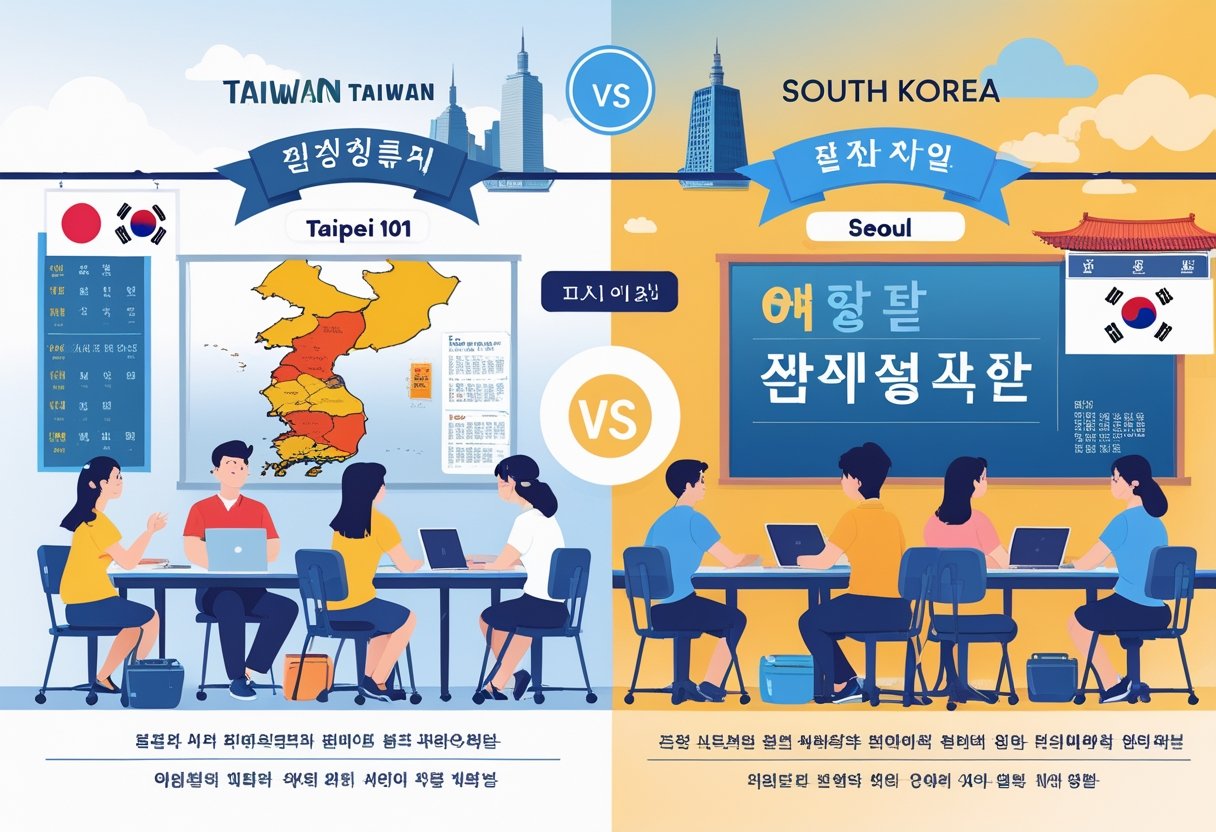
Both Taiwan and South Korea maintain similar baseline requirements for English teachers, though each country has specific documentation processes. TEFL certification plays different roles in each destination’s hiring landscape.
Qualifications and Documents Needed
Bachelor’s Degree Both countries require a four-year bachelor’s degree in any field. The degree must be from an accredited university and properly apostilled for legal recognition.
Native English Speaker Status Teachers must be from recognized English-speaking countries. This typically includes the United States, Canada, United Kingdom, Australia, New Zealand, Ireland, and South Africa.
Essential Documentation:
- Criminal background check (FBI check for Americans, RCMP for Canadians)
- Degree transcript with official apostille
- Medical examination results
- Passport photos meeting specific requirements
South Korea Specifics South Korea requires all documents to be apostilled and translated into Korean by certified translators. The process involves submitting paperwork through Korean consulates before arrival.
Taiwan Specifics
Taiwan allows teachers to arrive on tourist visas and convert to work permits locally. Documents still need apostilles, but the in-country processing offers more flexibility.
Background checks must be recent, typically issued within six months of application. Medical exams often need completion after arrival in both countries.
TEFL Certification Importance
South Korea’s Approach TEFL certification isn’t legally required in South Korea, but most employers strongly prefer candidates with credentials. Public schools through programs like EPIK often give hiring preference to certified teachers.
Hagwons (private language schools) vary in their requirements. Competitive positions in Seoul frequently expect TEFL certification, while rural areas may be more flexible.
Taiwan’s Perspective Taiwan generally places less emphasis on TEFL certification compared to South Korea. Many cram schools (buxibans) hire based on personality and English fluency rather than formal teaching credentials.
However, international schools and premium language centers increasingly expect certification. Teachers with TEFL credentials often command higher hourly rates.
Certification Benefits A 120-hour TEFL course provides practical classroom management skills and lesson planning techniques. Online courses are widely accepted, though in-person training with observed teaching practice carries more weight with employers.
Teachers without prior classroom experience find TEFL certification particularly valuable for building confidence and competence.
Salaries and Benefits
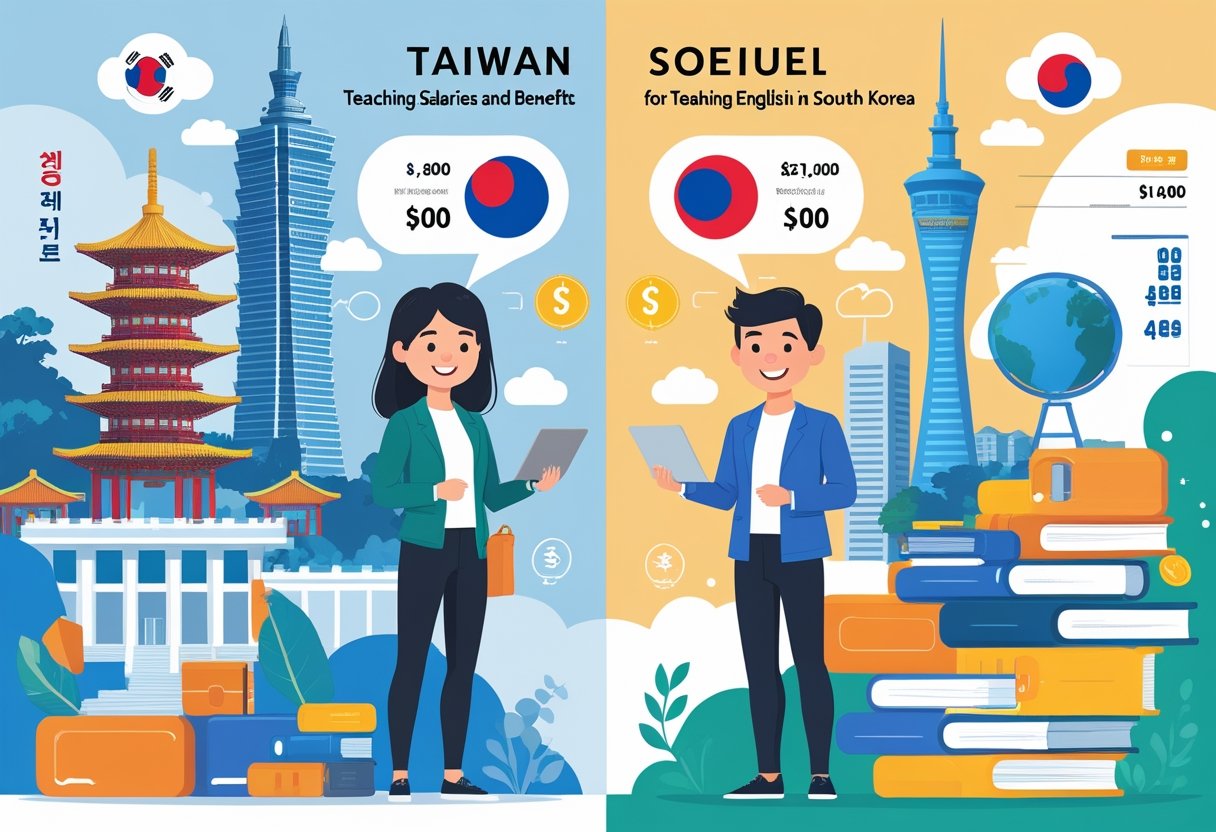
South Korea typically offers higher overall compensation through comprehensive benefit packages, while Taiwan provides competitive hourly rates with fewer additional perks. The financial advantage often goes to Korea due to housing and flight coverage.
Compensation Packages
South Korean schools generally provide monthly salaries around $2,000 or more, with public school positions through programs like EPIK offering structured pay scales. Private hagwons also maintain competitive rates within this range.
Taiwan operates primarily on hourly wages averaging NT$600 per hour. Teachers at private buxibans can expect monthly salaries between NT$50,000-60,000, while public school positions offer NT$65,000-75,000.
Salary Comparison:
- South Korea: $2,000+ monthly base salary
- Taiwan: NT$50,000-75,000 monthly (approximately $1,600-2,400)
Taiwan’s public school positions require teaching licenses from teachers’ home countries. Korea offers more flexibility with assistant teaching roles that don’t require prior certification.
Both countries provide pension contributions, though Korea’s severance pay system offers additional financial security. Teachers can save $500-1,500 monthly in both locations, depending on lifestyle choices.
Accommodation and Flight Reimbursement
South Korea stands out for comprehensive benefit packages that significantly reduce living expenses. Most positions include free furnished housing, eliminating rent costs that can consume 30-40% of income elsewhere.
Korean schools typically cover round-trip airfare or provide reimbursement upon contract completion. This benefit can save teachers $1,000-2,000 in travel expenses.
Taiwan schools rarely offer housing assistance. Teachers must secure their own accommodations and handle associated costs independently. Startup expenses are notably higher since schools don’t cover initial flights.
Key Benefits Comparison:
- South Korea: Free housing, flight reimbursement, severance pay
- Taiwan: Limited benefits, self-funded accommodation and travel
The housing benefit in Korea proves particularly valuable in expensive cities like Seoul. Taiwan teachers face significant upfront costs for deposits and furnishing apartments, requiring substantial savings before arrival.
Work Culture and Teaching Environment
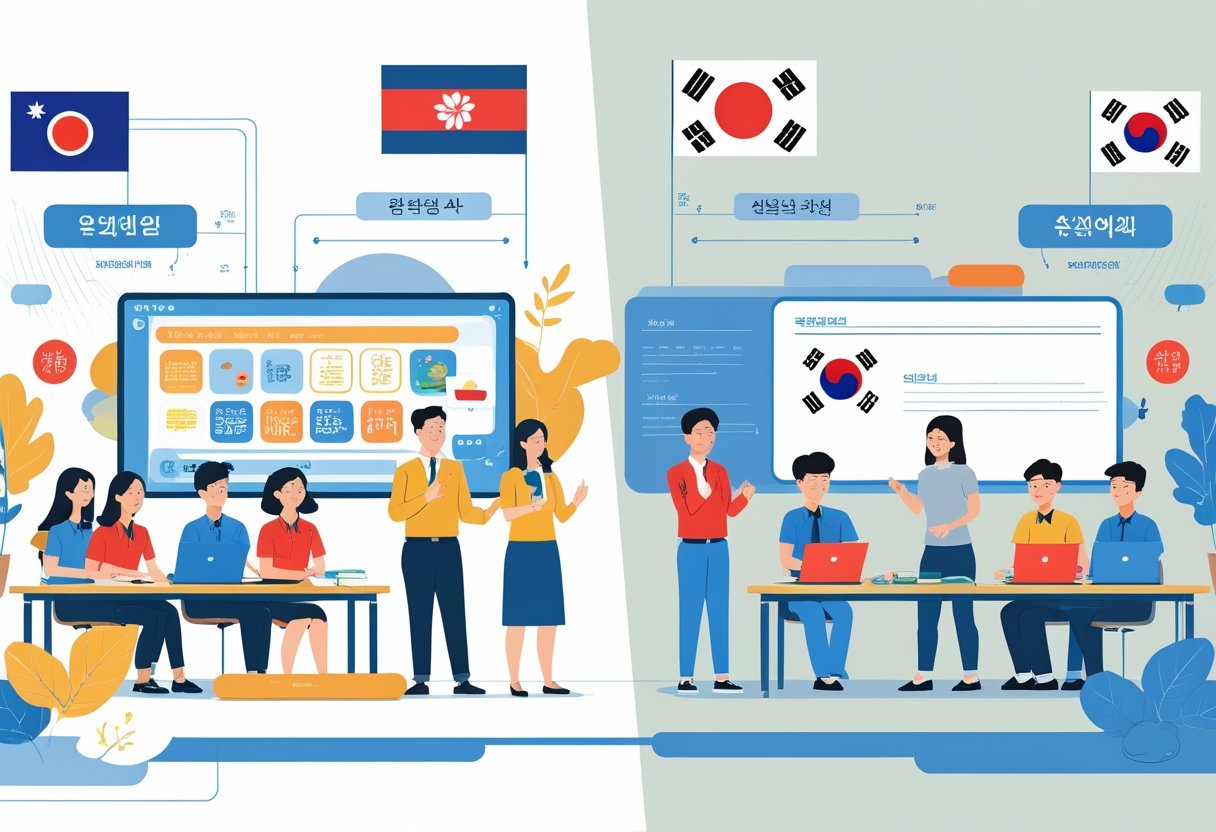
Teachers face notably different work cultures between Taiwan and South Korea, with Taiwan offering more relaxed environments and flexible schedules while South Korea maintains stricter academic standards and longer working hours.
Work Hours and Expectations
South Korea typically requires teachers to work 40-hour weeks with more rigid scheduling. Public school teachers work standard Monday through Friday hours, while hagwon instructors often teach from 2-9pm on weekdays.
Some teachers report working 10am to 8-9pm shifts, especially in private academies. Weekend classes remain common in many South Korean schools, adding extra time commitments.
Taiwan offers more variety in work schedules depending on the position type. Public schools maintain standard 40-hour workweeks similar to South Korea.
Private buxiban teachers work part-time schedules with 20-25 guaranteed hours per week. These positions typically run Monday, Tuesday, Thursday, and Friday from 5-9pm, with Wednesday afternoons free since elementary students finish at noon.
Full-time private school teachers work longer days from 1-9pm but enjoy weekends completely free from classes.
Work-Life Balance
Taiwan provides significantly better work-life balance compared to South Korea. Teachers report feeling less pressure to perform and describe the classroom atmosphere as more relaxed and inviting.
The part-time buxiban model allows teachers considerable freedom outside work hours. Many teachers who moved from South Korea to Taiwan end up staying longer due to reduced stress levels.
South Korea maintains intense academic pressure with high competition among students. Teachers face more pressure ensuring students excel on standardized tests, creating a more demanding work environment.
The culture emphasizes academic achievement heavily, which translates to higher expectations for teacher performance and student outcomes.
School Types and Class Sizes
Both countries offer teaching positions in public schools and private academies. South Korean hagwons focus intensively on exam preparation and supplemental education after regular school hours.
Taiwan’s buxibans serve similar functions but operate with less academic pressure. Public schools in both countries provide more stable working conditions with standard benefits.
Class sizes vary between institutions, but private academies in both countries typically maintain smaller groups for more intensive English instruction. Public schools generally have larger classes requiring different teaching approaches.
Teachers in Taiwan report having more autonomy in lesson planning and classroom management compared to South Korea’s more structured curriculum guidelines.
Lifestyle, Social Life, and Expat Community

Taiwan offers a more relaxed social atmosphere with stronger expat support networks, while South Korea provides vibrant nightlife but can feel less welcoming to foreigners initially.
Daily Life and Social Scene
Taiwan’s daily life revolves around night markets, bubble tea shops, and a laid-back evening culture. Teachers can explore street food vendors, join local hiking groups, or relax in hot springs after work.
The social scene feels more accessible to foreigners. Local Taiwanese people are generally curious about Western culture and more willing to engage with English teachers.
South Korea offers a different energy with its bustling nightlife and karaoke culture. Teachers often find themselves in noraebang rooms or exploring Seoul’s district-specific entertainment areas.
Korean social life can be more formal initially. Work relationships often extend to after-hours dining and drinking, which helps build connections but requires more commitment.
Both countries offer excellent public transportation. Taiwan’s MRT system and Korea’s subway networks make socializing across cities convenient for teachers.
Weekend activities differ significantly. Taiwan focuses on outdoor adventures like cycling around Sun Moon Lake. Korea emphasizes urban entertainment and shopping districts.
Support Networks for Expats
Taiwan has established expat communities in major cities like Taipei and Taichung. Facebook groups and meetup organizations help new English teachers connect quickly with others in similar situations.
Local expat bars and international restaurants serve as informal networking hubs. Many teachers find mentorship through these casual connections.
South Korea’s expat networks are larger but more fragmented. Seoul has numerous foreigner-friendly areas like Itaewon and Hongdae where English teachers gather regularly.
The support systems feel more structured in Korea. Many schools provide orientation programs that connect new teachers with established expat communities.
Both countries offer English-speaking medical services and international products, though Taiwan generally feels more accommodating to foreign residents’ daily needs.
Living Costs and Savings Potential
South Korea generally costs more than Taiwan, with Seoul being about 6-7% pricier than Taipei. However, both countries offer decent savings opportunities for English teachers depending on lifestyle choices and spending habits.
Typical Monthly Expenses
Housing takes the biggest chunk of monthly expenses in both countries. In Taiwan, teachers can expect to pay $400-800 for a decent apartment, while South Korea runs $500-900 for similar accommodations.
Food costs favor Taiwan significantly. Local meals cost $2-4 in Taiwan versus $4-7 in South Korea. Groceries, restaurants, and street food all run cheaper in Taiwan.
Transportation is affordable in both places. Taiwan’s metro systems cost around $30-50 monthly, while South Korea’s public transport runs $40-60. Both countries have excellent public transportation networks.
Utilities and phone bills are similar between countries. Expect $50-80 for utilities and $25-40 for mobile plans in both locations.
Entertainment and clothing cost more in South Korea. Movie tickets, gym memberships, and shopping all carry higher price tags compared to Taiwan’s more budget-friendly options.
Opportunities for Saving
Taiwan offers better saving potential due to lower living costs. Teachers can easily save 30-50% of their salary by eating local food and avoiding expensive imported goods.
Both countries reward teachers who embrace local lifestyles. Cooking at home, using public transport, and shopping at local markets dramatically reduce expenses.
South Korea’s higher salaries can offset increased costs. Private academies often pay $2,000-2,800 monthly, allowing savings despite higher expenses.
Housing arrangements make huge differences. Shared apartments or school-provided housing boost savings significantly in both countries.
Teachers should budget carefully for initial setup costs. Deposits, furniture, and registration fees can eat into first-month savings substantially.
Quality of Life and Travel Opportunities
Both countries offer excellent healthcare systems and strong safety records, with Taiwan slightly edging out South Korea in overall quality of life metrics. Teaching positions in both destinations provide easy access to explore Asia’s diverse cultures and landscapes.
Safety and Healthcare
Taiwan ranks higher on safety indexes, with a very high safety rating of 82.91 compared to South Korea’s high rating of 71.29. English teachers report feeling secure walking alone at night in both countries.
Both nations provide universal healthcare systems that rank among the world’s best. Taiwan scores 87.03 on healthcare quality while South Korea rates 82.88.
Teachers can access affordable medical care through national insurance programs. Prescription medications cost significantly less than Western countries.
Mental health support varies between locations. Larger cities in both countries offer English-speaking counseling services for expatriate teachers.
Air quality concerns exist in both destinations. Taiwan faces higher pollution levels (64.11 index) compared to South Korea (56.81 index), though both countries have implemented improvement measures.
Travel Within and Beyond Asia
Teaching English positions in both countries provide strategic bases for exploring Asia. Budget airlines connect major cities to destinations across Southeast Asia, Japan, and China.
South Korea’s high-speed rail system efficiently connects Seoul to Busan in under three hours. Teachers can easily visit Jeju Island, mountain regions, and historical sites on weekends.
Taiwan’s compact size allows teachers to experience diverse landscapes quickly. The island offers mountain hiking, coastal areas, and hot springs within short distances from major cities.
Both countries serve as excellent launching points for regional travel. Teachers frequently visit Japan, Thailand, Vietnam, and the Philippines during school breaks.
International airports in Seoul and Taipei offer competitive flight prices to destinations worldwide. Many English teachers extend contracts specifically to maintain these travel advantages.
Which Country Is Best for You?
The choice between Taiwan and South Korea depends on your career goals, lifestyle preferences, and personal circumstances. Both countries offer distinct advantages for professional development and different factors that could make or break your teaching experience.
Personal and Professional Growth
Taiwan provides a more relaxed environment for teachers seeking work-life balance and cultural immersion. Teachers typically work 20-25 hours per week at private schools, leaving ample time for exploring the island’s natural beauty and vibrant night markets.
The less stressful work culture allows educators to focus on developing their teaching skills without intense pressure. Many teachers report feeling more comfortable experimenting with different classroom approaches.
South Korea offers exposure to cutting-edge educational technology and highly competitive academic environments. Teachers gain experience with rigorous curriculum standards and intensive student preparation methods.
The demanding work culture, including longer hours and weekend classes, can accelerate professional skill development. However, this intensity may lead to burnout for some educators.
Language learning opportunities differ significantly between the two countries. Mandarin Chinese serves 1.3 billion speakers globally, while Korean reaches 80 million people.
Deciding Factors to Consider
Financial considerations play a crucial role in the decision-making process. Taiwan offers higher starting salaries ranging from $1,874 to $2,187 monthly, compared to South Korea’s $1,579 to $2,030 range.
The cost of living in Taiwan runs approximately 17% lower than South Korea. This difference means teachers can save more money despite similar salary ranges.
Visa requirements and preparation vary considerably between countries. South Korea demands extensive document collection, apostille certification, and higher upfront costs.
Taiwan requires minimal paperwork preparation, with only a national criminal background check needed before departure. No apostille certification is required for work permits.
Work schedule preferences should guide the final decision. Teachers who value weekends and evening flexibility will prefer Taiwan’s Monday-Friday schedule with no weekend classes.
Those comfortable with intensive schedules may thrive in South Korea’s demanding environment, including potential evening and weekend commitments at private academies.
